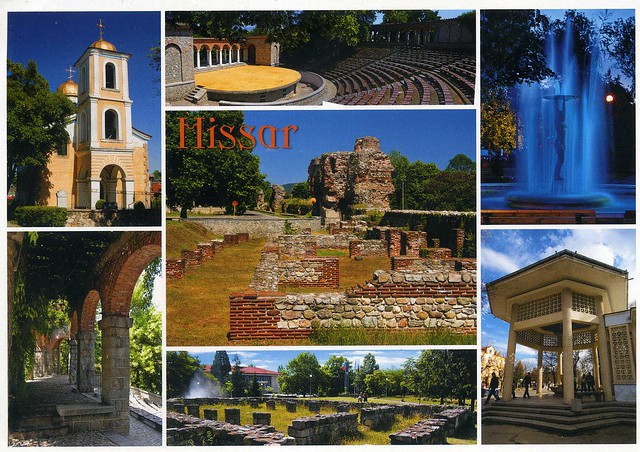
Hissar is a small resort town in Bulgaria, in Plovdiv Province. Located in the outskirts of the Sredna Gora mountain range, it boasts of a very mild climate and over two dozen different mineral springs, which make it a favorite spa for many Bulgarian and foreign tourists. The town's population is 7,691. The population of the municipality is approximately 14,826.
Because of these springs, the town was founded thousands of years ago. Some pre-historic remains have been found in what is now the town centre. Later, it became a Thracian city, and when Thrace fell to the Romans and became a Roman province, Hisarya became a Roman town - one of the three most important towns in the province. At various times it was called Augusta, Diocletianopolis (after emperor Diocletian) and a couple of other names. It was a famous resort even in those times, which is proved by the fact that emperor Septimius Severus himself visited the city.
Many Roman ruins are still visible everywhere - public buildings, a small amphitheatre, the barracks of the Roman garrison, the foundations of a couple of the oldest churches in Bulgaria, as well as the best preserved Roman fortress in Bulgaria. The southern gate is known as "The Camels", because it had broken in the middle and looked like two camels facing each other, before it was partially restored in the early 20th century.



 Maroon
Maroon 










































































































































































No comments:
Post a Comment